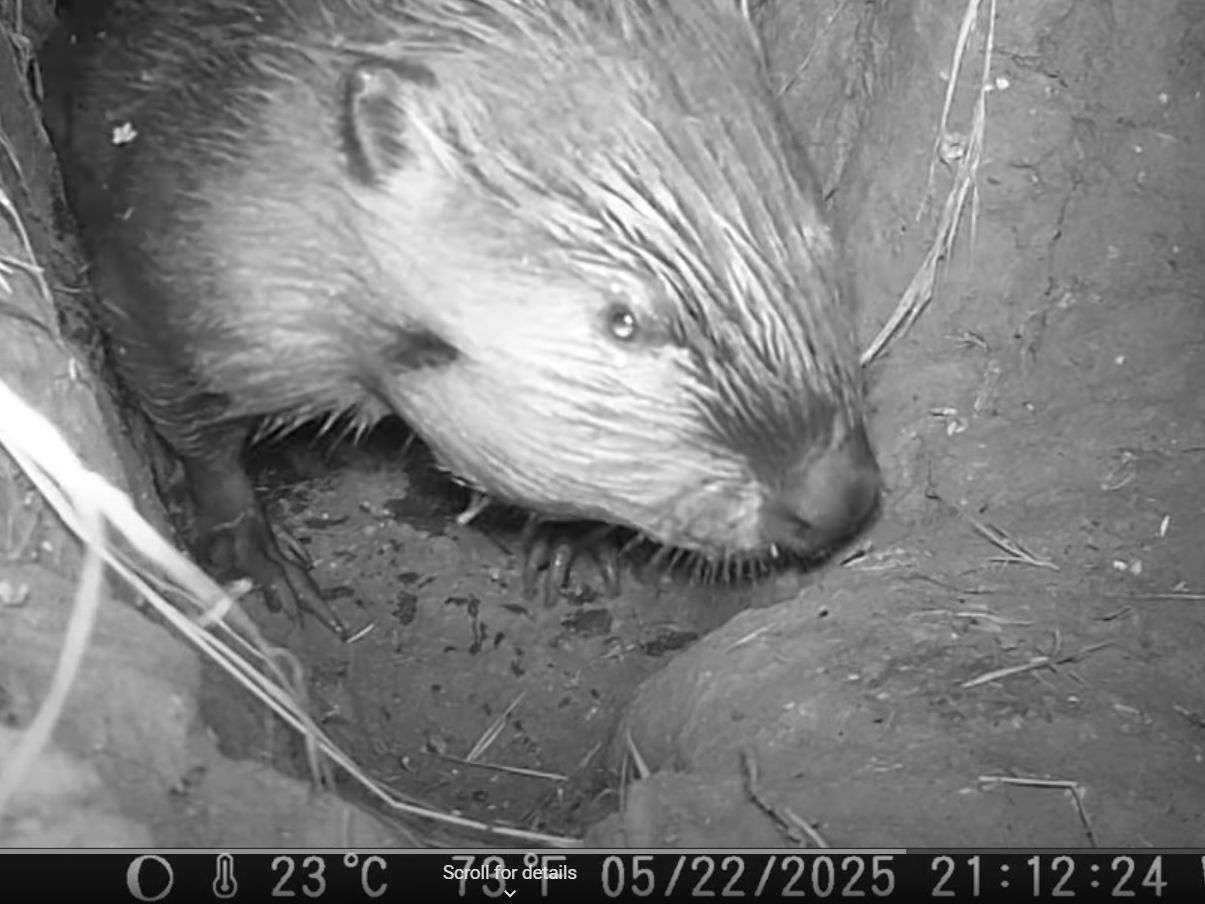Science Corner - North American Beaver (at Conaway Ranch!)

The North American Beaver also commonly called American Beaver, Canadian Beaver or just beaver is the largest member of the rodent family in the United States. The word rodent means “to gnaw” and rodents are characterized by a pair of continuously growing upper and lower incisors. Beavers must constantly gnaw on trees to keep their teeth from getting too long. About 40% of all known mammal species are rodents and are native all over the world with the exception of Antarctica.
It is believed that beavers are from ten to twelve million years old and fossils were first discovered in Germany. It is thought that these beavers used the Bering Strait to reach North America about seven million years ago. Today there are two distinct species of beaver; the American Beaver (Castor canadensis) and the Eurasian Beaver (C. fiber). The American Beaver is the species found in the United States and the rest of North America.
American Beavers (beavers) are semi-aquatic spending at least part of their day in water. Their tails are large, flat and paddle-shaped and when combined with their webbed hind feet, beavers are excellent swimmers. Beavers also use their flat tails to slap the water to signal danger to other nearby beavers, to store fat and to help them balance when toting loads of heavy logs and branches. Beavers' front feet are smaller than their rear feet and have claws rather than being webbed. Their front feet are extremely dexterous and give them the ability to grasp and rotate pencil-thin stems, peel off bark, dig and put food such as small leaves in their mouths. Another adaptation of semiaquatic life includes a nictitating membrane which covers and protects the eyes so they can remain open under the water allowing them to see and ears and nostrils that are able to seal shut while under water. Despite their large incisors, beavers are able to close their mouths over their teeth. Beavers range from about 25 pounds to over 70 pounds but the average is around 50. They are about 30 to 35 inches from nose to rump with tails that range from eight to nearly 14 inches long. Beavers sport a rich, dark chocolate-brown double coat which includes long, coarse outer hairs and short, fine and dense inner hairs. This coat helps keep the beaver’s body dry and insulates it from cold and hot temperatures. Beavers have two sets of scent glands. One set produces an oily substance called castoreum (which is where the beaver’s Genus, Castor, comes from and is used to waterproof their coats. The other set of scent glands produces waxy chemicals that help identify one beaver to another. Beavers also have a thick layer of fat just under their skin that also helps keep them warm while in cold, sometimes icy water. Beaver fur was so sought after at one point in time that they were nearly driven to extinction.
Beavers are primarily nocturnal but can also be active during the day and spend their time going to and from water collecting bark, leaves, roots and wetland plants to eat. They excel at swimming and can remain underwater for up to 15 minutes. Which is advantageous because they spend an awful lot of their time designing and building their homes and water control structures. Beavers build their dwelling or lodges using rocks, sticks and mud in waterways and other bodies of water. Their lodges may be juxtaposed to land or surrounded entirely by water. The inside of the lodge is covered with mud which dries to the consistency of cement keeping the lodge warm and dry during the cold, wet months. A breathing hole is left open at the top of the lodge and entrances are underwater. Lodges have multiple chambers and different elevations to keep them either moist for feeding or warm and dry for sleeping. Beavers also build dams in order to back up water and form deep ponds to allow for the beaver to escape predation from coyotes, wolves, mountain lions and other top predators. Dams are built using longer branches, vegetation and mud. If tree branches and vegetation are not available beavers will use rocks to build their dams. Branches, sticks, twigs and vegetation are cut using their incisors and carried and put in place using their front feet. Dam building not only provides a refuge for the beavers but it also creates and enhances habitat for other amphibians, fish and waterfowl. Beaver dams also help reduce soil erosion and may lessen the impacts of flooding.
Beavers are monogamous and mate at about three years of age. Only one litter of one to four kits is born a season and usually remain with their parents inside the warm, safe lodge for up to two years.
Beaver Facts :
- At one point beaver fur was so valuable, primarily for hats and shirts that the species was on the brink of extinction. Today it is estimated that there are about 10-15 million American Beaver occurring throughout its range in North America and are considered invasive species in some places!
- Very old beavers can weigh over 100 pounds (about the weight of a king size mattress)!
- It’s believed that the sound of running water is what urges beavers to build or repair their dams. The largest beaver dam was discovered by satellite imagery in 2007 near Alberta, Canada. It was nearly a half a mile long and two times wider than Hoover Dam!
- Beavers are considered “keystone species” because their activities provide increased biodiversity by forming or enlarging wetlands and surrounding riparian habitats - they are unique in that they can change the landscape!
Be sure to check out Tuleyome’s Youtube channel for a very close up (!) view of beavers and other wildlife friends at play at our partner in conservation Conaway Ranch!
-Kristie Ehrhardt (kehrhardt@tuleyome.org)
Tuleyome Land Conservation Program Manager
RECENT ARTICLES






